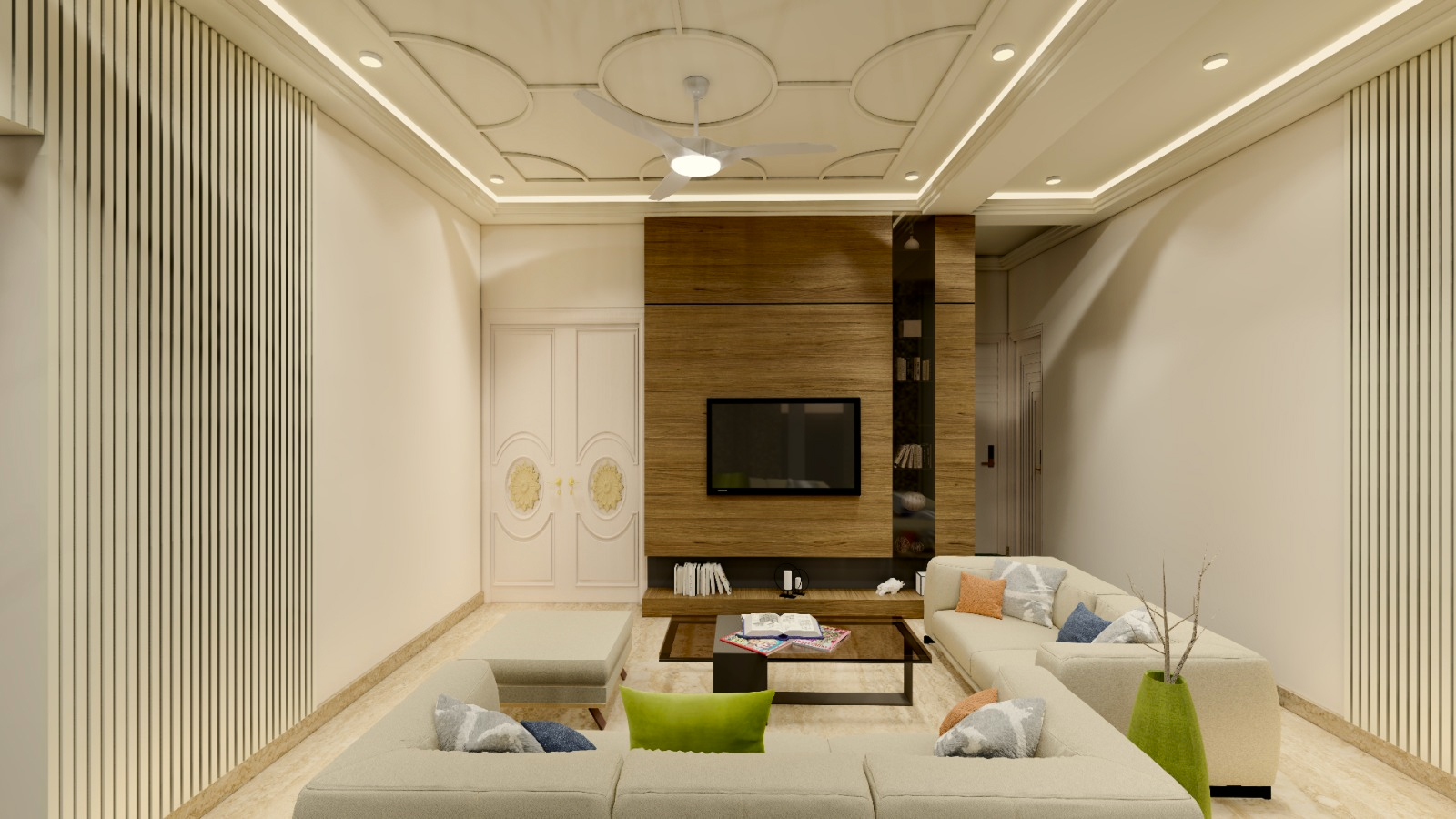Best Architect-Recommended Facade Designs for Haldwani Homes (2025 Guide)
25 Nov.
Published on 06 Sep

Haldwani sits at the foothills of Kumaon with a humid-subtropical climate (avg. ~22.7 °C and ~1,669 mm rain annually). Designs that handle heat, humidity and heavy monsoons age better here.
The city is growing fast, which means smarter use of space in apartments and plotted homes. It’s also in a higher seismic zone, so interiors benefit from safer detailing and lighter assemblies.
Designers are reinterpreting Kumaoni cues—stone textures, lime-washed walls, slate-style finishes and carved wood—to create grounded, timeless rooms. Traditional Kumaon homes used local stone, slate roofs and lime finishes; bringing those textures indoors (as accent walls, hearths, or terrazzo-with-stone chips) feels both regional and modern.
Star Construction tip: Try a single stone-finish feature wall, lime paint (soft sheen, low VOC) and warm sheesham joinery for a heritage-meets-contemporary vibe.
With long, wet spells and periodic red alerts in Uttarakhand’s monsoon, interiors that dry fast and resist moisture are trending. Think vitrified tiles, UPVC/treated hardwood windows, breathable lime or mineral paints, and mesh ventilation that keeps airflow without bugs.
On the ground: We’re pairing cross-ventilation planning with anti-rust hardware, water-resistant laminates in kitchens, and raised skirting so walls don’t wick mop water.
Light beats heavy: slimmer partitions, anchored wardrobes, safety-filmed glass, and restrained stone at high levels. Following the spirit of IS 1893 (Part-1:2016), we prioritize lighter non-structural elements and secure fixings for tall furniture.
Star Construction practice: Hidden anti-tip brackets for cabinets, mechanical anchors in masonry, and soft-close hardware that won’t fling open in tremors.
Instead of full traditional façades, homeowners are adding Likhai (intricate Kumaoni wood carving) as a single statement panel, pooja-door, headboard or console. It injects local art without visual heaviness.
Aipan, the red-and-white folk art of Kumaon, is popping up as stencil borders, mural plates, cushion prints, and rug patterns—subtle, classy, and deeply local.
Engineered wood floors (for upper levels), sheesham and sal furniture with proper seasoning, and matte oil finishes are in. Ground floors lean toward tiles/stone for faster drying; wood comes in as loose furniture and wall cladding.
Protection matters: We follow IS 6313 guidance for anti-termite measures during renovations and new builds (pre- and post-construction).
Nature-first schemes—forest greens, river-stone greys, terracotta, off-white lime—stay popular. Textural plaster, woven cane, hemp curtains and handlooms keep rooms breathable and low-maintenance.
Rising urban density means multifunction furniture (platform beds with drawers, banquette seating with storage), ceiling-height wardrobes, and wall-hung vanities that free up floor area—especially in 2–3BHKs.
Semi-open verandahs with slatted screens and planters are back—great for evening breeze and winter sun. Terrace gardens use lightweight soil mixes and drip irrigation to keep slabs safe and plants happy.
Large shaded openings with chajjas cut glare; inside, the trend is layered lighting—ambient cove light, focused task light on counters/desks, and warm accent spots on craft pieces.
Living room
Kitchen
Bedrooms
Bathrooms
Limited-time offer for Haldwani & Kathgodam
Free 30-minute design consult + on-site assessment with a senior designer from Star Construction. Tell us your carpet area and style, and we’ll map a trend-fit, budget-fit plan—no obligation.
Q1. Which flooring survives monsoon best?
Vitrified tiles or natural stones with proper sealers on ground floors; engineered wood is great for upper floors. Add door mats & shoe storage to keep moisture down.
Q2. Will wood warp here?
Not if it’s seasoned, finished right, and rooms ventilate well. We include termite treatment and ventilation strategies by default, following IS 6313 practices.
Q3. Are heavy ceiling features safe in a quake-prone region?
We avoid overweight false ceilings and anchor services/furniture per the intent of IS 1893, keeping non-structural elements light and secure.
Q4. Can tradition and minimalism go together?
Yes—one carved Likhai panel or an Aipan motif is enough to “place” the home in Kumaon without clutter.
Let’s Build Together with Star Construction.
Leave A Reply
Your email address wil not be published. Required fields are merked*
* * * $3,222 payment available * * * hs=e8a76d4ac413c81cedfdf638906fd4d4* ххх*
ll1z0a
2025-10-05
* * * $3,222 deposit available! Confirm your transaction here: http://fintellect.in/index.php?1lhyvq * * * hs=e8a76d4ac413c81cedfdf638906fd4d4* ххх*
ll1z0a
2025-10-05